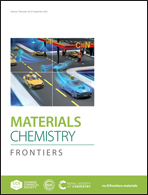Progress of electrocatalytic urea synthesis: strategic design, reactor engineering, mechanistic details and techno-commercial study
Abstract
The industrial production of urea is a two step process, involving the reaction of nitrogen and hydrogen to form ammonia followed by the reaction of ammonia with carbon dioxide, so the process is a capital expensive, energy consuming and complex synthesis technique with multiple cycles to increase the production efficiency. On the other hand, electrocatalytic C–N coupling reaction to specifically produce urea by simultaneous activation followed by co-reduction of carbon dioxide (CO2) and nitrogen sources (N2, NO2− or NO3−) under ambient conditions presents a sustainable and eco-friendly alternative route for urea production by a single step process. However, there are several challenges like adsorption capabilities of the reactants on the substrates followed by activation, vital interaction of the catalyst with intermediates, suppression of the hydrogen evolution reaction and finally effective C–N bond formation to specifically produce urea. In this work we showcase the road map of the electrocatalytic green urea production, with concise yet precise discussion on potential electrocatalysts, electrochemical reactor engineering, mechanistic insight into urea synthesis, and a techno-commercial study and finally conclude with the future prospects of green urea production.

- This article is part of the themed collections: 2023 Materials Chemistry Frontiers Review-type Articles and 2023 Materials Chemistry Frontiers HOT articles


 Please wait while we load your content...
Please wait while we load your content...